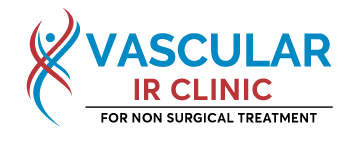The varicose veins are twisted, the veins are swollen. Every superficial vein may become varicose, but the most frequently affected veins are those in your legs. This is because standing and walking straight raises the strain in the veins of your lower body.
For many people, varicose veins and spider veins— common, mild variations in varicose veins — are simply a cosmetic issue. For other people, varicose veins may cause pain and discomfort. Often varicose veins contribute to more serious problems.
Treatment can require self-care steps or procedures to close or remove veins by your doctor.
Symptoms
Varicose veins may not cause any pain. Signs you may have varicose veins include:
- Veins that are dark purple or blue in colour
- Veins that appear twisted and bulging; they are often like cords on your legs
When painful signs and symptoms occur, they may include:
- It’s an aching or heavy sensation in your legs.
- Burning, throbbing, muscle cramping, and swelling in the lower legs.
- Worse discomfort after a long time sitting or standing Itching around one or more of your veins.
- Discolouration of the skin around a varicose vein.
Spider veins are similar to varicose veins, but they are smaller. Spider veins are located closer to the surface of the skin and are often red or blue.
Spider veins are present on the legs, but they can also be found on the neck. They vary in size and often look like a web spider.
When to see a doctor
Self-care — such as stretching, lifting your legs or wearing compression stockings — may help relieve varicose vein pain and may prevent it from getting worse. But if you’re concerned about how your veins look and feel and your self-care hasn’t stopped getting worse, see your doctor.
Causes
Weak or damaged valves may cause varicose veins to develop. Arteries carry blood from your heart to the rest of your tissues, and veins send blood back to your heart from the rest of your body so the blood can be recirculated. The veins in your legs will battle against gravity to get blood back into your head.
Your lower legs have muscle contractions that serve as pumps, and elastic vein walls help blood return to your heart. Small valves open in your veins as blood flows into your heart and close to avoid blood flowing backwards. If those valves are weak or impaired, blood may flow backwards and pool in the vein, causing stretching or twisting of the veins.
Risk factors
These factors increase your risk of developing varicose veins:
- Through age, the likelihood of varicose veins is growing. Ageing causes the valves in your veins to wear and tear which helps to control blood flow. This wear eventually causes the valves to allow some blood to flow back into your veins where it pools rather than flow to your heart.
- Women have a greater chance of developing the disease. Hormonal changes may be a factor during pregnancy, pre-menstruation or menopause because female hormones appear to relax the walls of the veins. Hormone treatments can increase your risk of varicose veins, such as birth control pills.
- The amount of blood within the body increases during pregnancy. This shift benefits the growing fetus, but can also cause an unfortunate side effect — widening veins in your legs. Hormonal changes can also play a part during pregnancy.
- Family history. If other members of the family have varicose veins, you will have a greater chance too.
- Obesity. Overweight puts added strain on your veins.
- Sitting for long intervals. If you’re in the same position for long stretches, your blood doesn’t flow as well.
Complications
Complications of varicose veins, although rare, can include:
- Painful ulcers may grow near varicose veins on the skin, especially near the ankles. A discoloured spot on the skin normally occurs before becoming an ulcer. If you think you have developed an ulcer, see your doctor immediately.
- Blood clots. Occasionally, veins are enlarged deep within the thighs. The affected leg can in these cases become painful and swell. Any recurring pain or swelling of the legs demands medical attention as it can suggest a blood clot — a condition medically known as thrombophlebitis.
- Occasionally veins can burst very close to the skin. This normally only causes minor bleeding. But any bleeding does require medical attention.
Prevention
There’s no way to prevent the varicose veins entirely. Yet enhancing your circulation and muscle tone will lower your risk of developing or getting additional varicose veins. The same steps that you can use to relieve varicose vein pain at home will help prevent varicose veins including:
- Exercising
- Watching your weight
- Eating a high-fibre, low-salt diet
- Avoiding high heels and tight hosiery
- Elevating your legs
- Changing your sitting or standing position regularly
